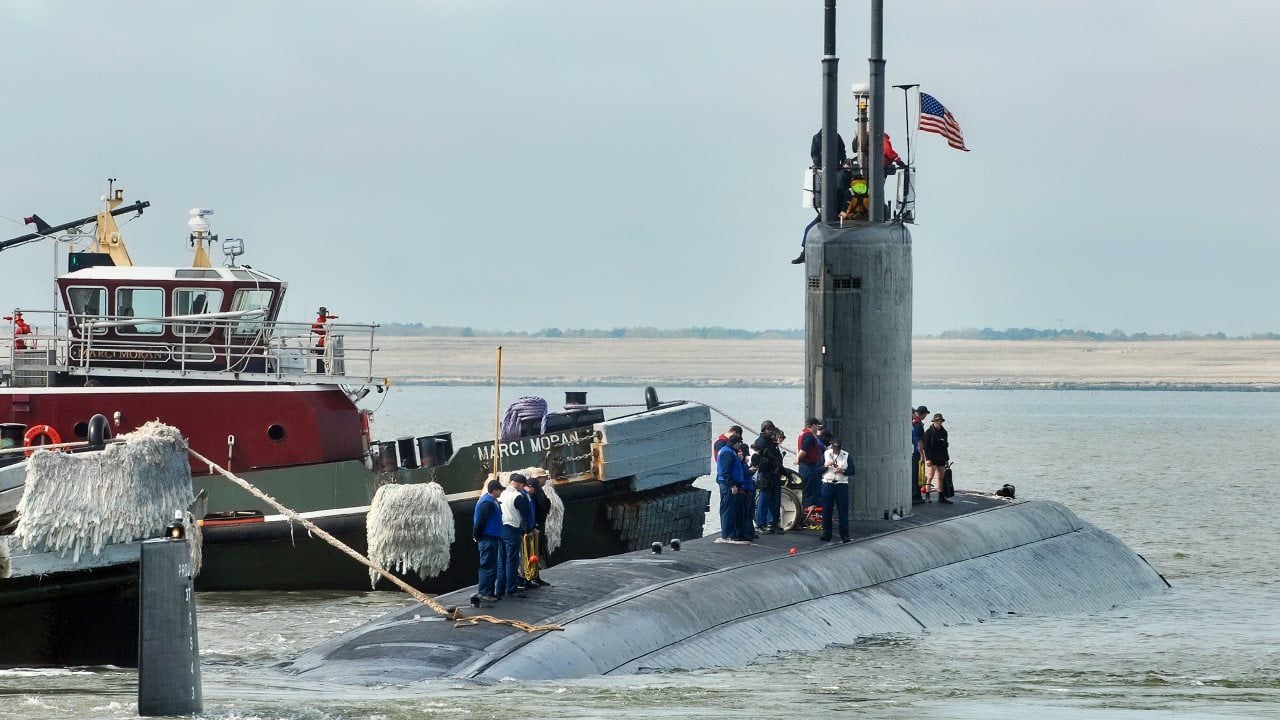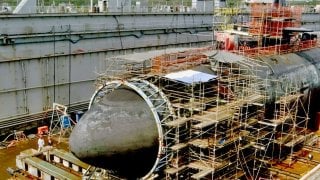Navy Nuclear Sub 'Went Bang' Into A 'Seamount' at 30 Miles Per Hour
In 2005, the USS San Francisco, a Los Angeles-class nuclear-powered attack submarine, collided with an undersea mountain (seamount) near Guam while traveling at full speed at a depth of 525 feet. The impact injured 98 crew members, killed one sailor, and severely damaged the submarine's front ballast tanks.
What You Need to Know: In 2005, the USS San Francisco, a Los Angeles-class nuclear-powered attack submarine, collided with an undersea mountain (seamount) near Guam while traveling at full speed at a depth of 525 feet. The impact injured 98 crew members, killed one sailor, and severely damaged the submarine's front ballast tanks.
-At the time, navigational technology was less advanced, and the submarine relied on passive sonar, which couldn't detect the seamount.
-The incident highlighted the challenges of undersea navigation in complex regions like the Indo-Pacific and emphasized the need for improved mapping, training, and technology.
-The USS San Francisco was later repaired and returned to service in 2009, but the accident underscored the potential dangers submarines face, especially in cluttered underwater environments.
The USS San Francisco's Near-Fatal Collision: A Submarine's Brush with Disaster
The Indo-Pacific is a region that presents one of the most complex waterways for submarines belonging to the United States Navy to navigate. Only just recently are submarines being given the kind of detailed mapping of these regions.
Even then, as the official explanation for the Seawolf-class submarine USS Connecticut shows us, the most advanced submarines with the most sophisticated navigational capabilities can miss things in a cluttered undersea environment.
Before the Connecticut incident in the South China Sea in 2021, though, the United States Navy experienced the pain of having one of their submarine suffer grave damage because of failed navigational technology.
The USS San Francisco is believed to have collided with an undersea mountain (or, a “Seamount”) back in 2005, during the George W. Bush administration. The US Navy was not the priority back then and what we call the Indo-Pacific region today was certainly not a focus of US strategists.
The Middle East and fighting terrorism were the primary focus.
Therefore, when the San Francisco crashed in the Western Pacific, near Guam, it was a very jarring experience for all in the Navy—not just the crew of the submarine.
According to the National Oceanic and Atmospheric Administration (NOAA), “seamounts encompass 28.8 million square kilometers of the Earth’s surface […] that’s larger than deserts, tundra, or any other single land-based global habitat on the planet.”
The Incident
On January 8, 2005, while cruising at its top speed of around 30 miles per hour, at 525 feet deep, the Los Angeles-class nuclear-powered attack submarine USS San Francisco smashed into such a seamount while transiting the SCS.
An astonishing 98 crewmembers were injured, one was killed, the front of the submarine was smashed—notably its all-important ballast tanks. The submarine, despite the damage, managed to survive the ordeal and limped back to port. It is a testament to the engineering of American submarines that the submarine in question did not sink after the caustic undersea crash.
How is it that a modern US Navy nuclear-powered submarine did not see a seamount?
In 2005, the navigational technology was not as good as it is today. What’s more, the submarine in question was moving at a fast clip. There are systems onboard, such as the active sonar array, that could have detected the presence of the seamount. Rarely, however, do submarines operate with the active sonar toggled on. These systems are instead saved for when a submarine is in combat, and the crew needs precise targeting for their torpedoes.
Active sonar is very “loud” underwater.
Enemy submarines can easily detect a submarine that is employing the technology. That is why submarines do not operate the system unless they are already engaged in combat (where stealth is no longer a factor).
The passive sonar array is constantly running. But it is not capable enough to detect seamounts.
A Technology Problem
Further, in 2005, certain advances in undersea navigation had yet to be made. As Kris Osborn at Warrior Maven outlined, “in the absence of [Global Positioning System, GPS] or any high-frequency radio, submarines undersea can face navigational challenges.” And even with GPS and other advancements, sometimes seamounts are not exactly placed where they really are on navigational maps.
Nevertheless, the ship’s commanding officer, Commander Kevin Mooney, was relieved of his command and found guilty of dereliction of duty along with a handful of other sailors onboard, on the grounds that the submarine’s crew had updated navigational charts—but neglected to use those charts while underway.

The Navy learned a valuable set of lessons as a result of the undersea crash that it would later apply to the development of future navigational technologies and techniques.
The San Francisco herself was ultimately returned to active duty in 2009.
Yet, she was given a total facelift as a result of the severe damage that she received underwater in 2005. It’s an important tactical lesson, too. As the Connecticut incident in the South China Sea showed the Navy, navigating in the Indo-Pacific, in the waterways closest to the Asian mainland, presents unique difficulties. Submariners need to be better equipped and trained to navigate these unique undersea passages.
Getting Ready for a Degraded Electronic Battlefield at Sea
This becomes a particular point of focus, seeing as the technological accoutrements modern US submarines rely upon to avoid the kind of hazards that both the San Francisco and the Connecticut ultimately encountered in the wider region become more pronounced if US submarines ever have to fight against Chinese forces that possess the capabilities to degrade the electronic environments of the region.
In so doing, the Chinese could conceivably render US subs underway in the area deaf, dumb, and blind.
If the experiences of either the San Francisco or the Connecticut are any indicator, this could be a nightmare scenario for the US Navy, that will increasingly rely upon its (limited) submarine force to counter any Chinese provocation in the region.
Author Experience and Expertise: Brandon J. Weichert
Brandon J. Weichert, a National Interest national security analyst, is a former Congressional staffer and geopolitical analyst who is a contributor at The Washington Times, the Asia Times, and The-Pipeline. He is the author of Winning Space: How America Remains a Superpower, Biohacked: China’s Race to Control Life, and The Shadow War: Iran’s Quest for Supremacy. His next book, A Disaster of Our Own Making: How the West Lost Ukraine, is due October 22 from Encounter Books. Weichert can be followed via Twitter @WeTheBrandon.
All images are Creative Commons or Shutterstock.
From the Vault
Russia Freaked Out: Why the U.S. Navy 'Unretired' the Iowa-Class Battleships
Battleship vs. Battlecruiser: Iowa-Class vs. Russia's Kirov-Class (Who Wins?)


